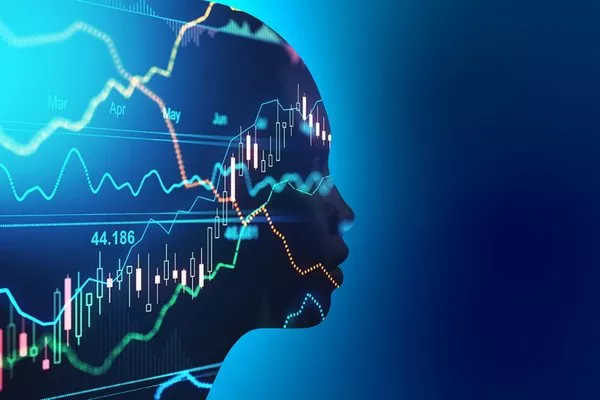The world of futures trading is a dynamic and vibrant domain, driven by investors seeking to profit from future price movements. Within this realm, certain futures contracts emerge as frontrunners, commanding enormous trading volumes and attracting traders from across the globe. In this article, we will delve into the realm of futures trading and shed light on the most heavily traded futures contracts that dominate the pulsating heart of global markets.
1.Crude Oil Futures: Powering the Global Economy
Crude oil futures hold an unrivaled position as the most heavily traded futures contracts globally. As the lifeblood of the global economy, oil impacts nearly every sector and influences market sentiment. The highly liquid nature of crude oil futures, along with their ability to serve as a hedge against oil price volatility, attracts a multitude of market participants, including speculators, producers, and consumers. The West Texas Intermediate (WTI) and Brent crude oil futures are the most prominent benchmarks in this arena.
2. S&P 500 Futures: Tracking the Pulse of the US Economy
S&P 500 futures contracts offer traders exposure to the U.S. equity market’s performance. They have become the go-to instrument for investors seeking to gauge the overall health of the U.S. economy. The S&P 500 index comprises the largest 500 publicly traded companies in the United States, spanning various sectors. By trading S&P 500 futures, market participants can speculate on the future direction of the U.S. stock market, enabling them to manage risk and capitalize on market movements.
3. Treasury Bond Futures: Safeguarding Wealth with Fixed Income
Treasury bond futures play a vital role in the world of fixed income trading. These contracts enable investors to speculate on the future direction of interest rates and manage risk associated with changes in bond prices. Popular treasury bond futures contracts include those based on U.S. Treasury bonds and notes, such as the 10-year Treasury note futures. These futures contracts are highly regarded as a haven during periods of economic uncertainty, attracting investors seeking stability and income generation.
4. Gold Futures: Preserving Value Amidst Market Volatility
Gold has long been considered a safe-haven asset, and gold futures provide traders with a means to profit from price fluctuations in this precious metal. As geopolitical tensions and economic uncertainties rise, investors often flock to gold as a store of value. Gold futures contracts offer exposure to the underlying asset’s price movements and are widely used by speculators and hedgers alike. The COMEX gold futures contract is the most prominent in the market, serving as a benchmark for global gold trading.
5. Eurodollar Futures: Navigating the Interest Rate Landscape
Eurodollar futures, traded on the Chicago Mercantile Exchange (CME), are one of the most heavily traded interest rate futures contracts globally. These contracts are cash-settled and offer market participants a way to hedge against or speculate on short-term U.S. dollar interest rates. As a widely used benchmark, eurodollar futures provide a crucial tool for traders, investors, and institutions to manage interest rate risk and capture opportunities in the global fixed income market.
6. Natural Gas Futures: Energizing the World
Natural gas futures serve as a cornerstone for energy trading and provide participants with exposure to the price movements of this vital commodity. Natural gas futures contracts enable market players to manage risks associated with weather fluctuations, supply and demand dynamics, and geopolitical factors. The Henry Hub Natural Gas Futures contract, traded on the New York Mercantile Exchange (NYMEX), is the most popular and widely recognized natural gas futures benchmark.
Conclusion:
In conclusion, the world of futures trading encompasses a wide range of contracts, each catering to different sectors and market dynamics. However, certain futures contracts stand out due to their immense trading volumes and their influence on global markets. Crude oil futures, S&P 500 futures, treasury bond futures, gold futures, eurodollar futures, and natural gas futures dominate the landscape, attracting a diverse array of market participants.
These heavily traded futures contracts serve multiple purposes. They act as a vehicle for speculation, allowing traders to profit from price movements. They also serve as essential risk management tools, enabling investors to hedge against potential losses or volatility in the underlying assets. Furthermore, they provide a means for investors to gain exposure to various sectors and asset classes, facilitating portfolio diversification.
The liquidity of these futures contracts plays a crucial role in their popularity. High liquidity ensures that traders can enter and exit positions with ease, minimizing transaction costs and enhancing trading efficiency. Moreover, the vast trading volumes and active participation in these contracts contribute to the price discovery process, making them reliable benchmarks for their respective markets.
It is important to note that while these futures contracts dominate trading volumes, there are numerous other futures contracts available in various sectors, including currencies, agricultural commodities, metals, and equity indices. The choice of which futures contracts to trade ultimately depends on an individual’s investment goals, risk appetite, and market expertise.
As global markets continue to evolve and adapt to new economic, geopolitical, and technological developments, the landscape of heavily traded futures contracts may undergo shifts. Emerging sectors such as cryptocurrencies and renewable energy may witness the introduction of futures contracts as they gain prominence in the financial world.
In conclusion, the most heavily traded futures contracts represent the pulse of global markets. They capture the essence of key sectors, enabling participants to navigate market trends, manage risks, and capitalize on opportunities. Whether it’s crude oil, equity indices, fixed income instruments, precious metals, interest rates, or energy commodities, these futures contracts serve as the lifeblood of global financial markets, driving economic growth and facilitating efficient capital allocation.


